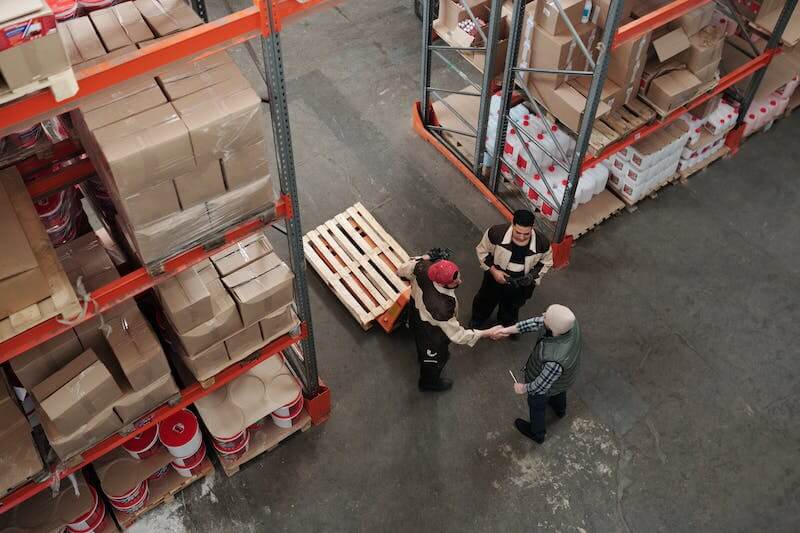WorkStep’s Chief Revenue Officer, Rachel Bates, had the privilege of chatting with Drew Holler, former Senior VP, People Partner to the COO at Walmart. Drew provided insights about the state of the market, the importance of being seen as an Employer of Choice, and what he believes the future of the hourly workforce will look like.
Can you start with a little introduction?
I was with Walmart for almost 21 years. I spent eight years in the supply chain. I actually started working in a position that WorkStep builds solutions for – I started in a warehouse as a manager. I had various jobs and moved my way up to regional and then worked in strategy for a little while with store operations. So retail operations, running big groups of stores around the country.
Then I moved into the people space. I was asked to lead the workforce of the future for Walmart. It was supposed to be a 6 month gig and ended up being five years. I built out all the workforce strategies, automated all the hiring, and did a lot of the work that WorkStep is doing around retention.
I spent a lot of time on technology development in the HR space as well as supporting 1.5 million associates at Walmart. I just recently left and have been out for 14 months now. The last several months I’ve been working on advising officials at WorkStep and a few other companies, while doing a few other things on the side too.
I’ve really enjoyed getting to know the company. I think WorkStep is well positioned in a lot of ways, which I’ll be happy to talk about along with what I see in the market.
There is a lot of noise and speculation about recession and what’s happening around it. What do you see at the macro level in terms of the market?
I think there’s a lot within the market, but specifically when I talk about it, it’s more about the labor market and what we’re seeing from hiring and headcount positioning that companies are doing. How I see it, the job market will continue to be very very tight, even as we enter into a recession, and specifically for frontline workers.
The demand is still outstripping supply, and for the vast majority of markets the pandemic showed a lot of flaws within frontline hiring and retention, and companies are scrambling to get ahead of it. For two years through the pandemic it was all about hiring as many people as possible just to stay ahead of the volume of vacancies as a result of Covid.
What I saw at Walmart and everywhere else is that it then turned to retention. The focus became how they can secure individuals for two to three years on the frontline because it reduces training costs and everything else.
I don’t see that slowing down at all. So I think over the next three to five years it is going to continue to be tight. I think it’s going to lead a lot of companies to automation versus slowing down hiring. That could be an output over time – automation can take a long time to develop, adapt and implement.
So hiring in this job market, specifically for frontline roles, is still going to be a workers market, meaning workers have choices and can decide where they want to work. It’s not an employer market anymore where they get to choose from a plethora of people. The power is with the people right now, and I foresee that being the case for quite some time.
I’d love to hear your perspective on what it means to be an Employer of Choice today. What are these companies doing?
It’s about improving the customer experience through the employee experience. The reason I say that is the goal of every company is to satisfy customers and to satisfy shareholders. If you’re a public company it would be to make money. But you can do all that even better through a really good employee experience. So a great customer experience typically comes from a great employee experience.
Being an employer of choice makes a lot of good business sense, and that’s starting to be played out. You can see that with long term companies that have really good brand awareness. Typically if you have really good brand awareness, you have really good employee awareness. So we used to measure at Walmart, and this is a known industry fact, when the largest driver of brand awareness of a customer is the perception of how you treat your employees. If I’m a customer and I think you do not treat your employees very well, I have a negative view of your brand. It’s the right thing to do from an employer perspective.
It’s the right thing to do from a human perspective, creating these environments and creating pathways. But it also makes really, really good business sense. And people are starting to connect those dots more than I’ve ever seen in the last 10 years.
So being an Employer of Choice is being a company that provides competitive pay, but it’s also providing opportunity. Pay kind of gets people in the door, opportunity gets people to stay.
Opportunity could be learning skills and growing within the company. Being an Employer of Choice is allowing people to climb the ladder and gain responsibility along with pay. Opportunity can also be building a lot of skills to one day leave the company and go on to other things. And that is a different employee proposition, both of which could be Employees of Choice.
It’s a very directive – I’m coming in. I get good pay, but I’m also learning skills. I’m investing in my education. I’m investing in myself, and it’s preparing me to have a better life through future jobs down the road. So pay and opportunity is probably how I would measure being an Employer of Choice.
Where do you see the world of hiring going based on your experience and automating that process?
I don’t think anybody knows what this is gonna look like 5 years from now, but I think there’s a couple of trends. One is that individuals want autonomy in their work. They want to make decisions and to be able to fit their job into their life, not their life to fit into their job. And that’s a trend at all levels, particularly at the frontline.
Think of Uber, drivers. That kind of stuff is gonna continue to grow. What your W2 employers are gonna have to figure out is how do I create that environment, but in a W-2 status.
A W-2 employer is going to have to figure out how to compete for those workers and create those environments. And what that means is instant hiring, like Uber. It’s a contractor relationship. They are 100% in control of their schedule. Some of those aspects will come into a W-2 environment, there’s no doubt in my mind. And that’s all driven through technology. Hiring people through an automated way, measuring their performance in an automated way, and having the ability to look across big swaths of workers that could work for five different companies at one time, but are W2.
Being able to very systematically figure out when those individuals work, what shifts they pick up, what they do, and plan your workforce in that environment, is all gonna be technology driven.
I think there’s going to be a lot of work done to create that environment for workers today where they have 100% control within that W2 environment. Somebody’s gonna figure that out. I think some companies are trying to figure that out themselves. They’re automating hiring, they’re automating talent development, they’re automating learning. That’s what I spent five years doing at Walmart. It’s clearly the future of workers. A huge thanks to Drew for sharing his insights with us.
Tune into your frontline with WorkStep
With the frontline employee engagement platform that delivers the real-time insights you need to take action, retain your workforce, and drive your business forward.
Mark Bell, VP of Marketing | markbell@workstep.com



